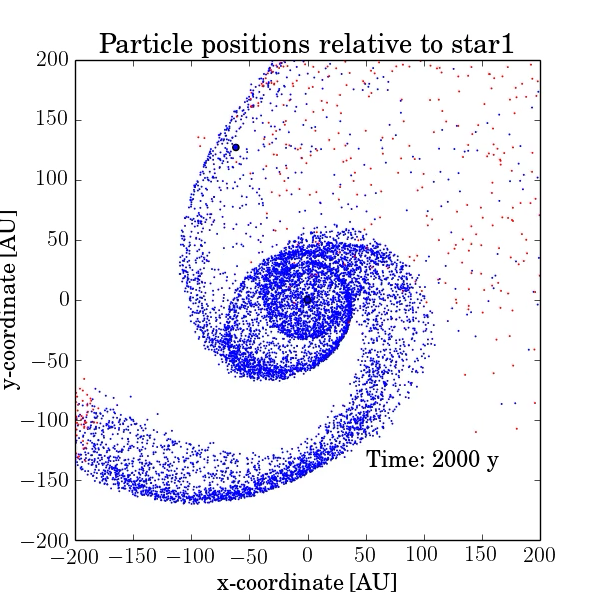
Description
Most stars form not in isolation but as part of a stellar group. Many of them are initially surrounded by disks, which can eventually harbor planet(s). Both the disk as well as planetary systems may be affected by the cluster environment due to close fly-bys. The here presented database can be used to determine the effect of such fly-bys on non-viscous disks and planetary systems.
Datasets
There are two ways to use this database:
- download the data itself and perform ones own diagnostics
- use the graphic tool provided to obtain various properties after a fly-by
Fly-by scenarios
The movie on the left shows a face-on and edge-on view of the disk during an encounter (courtesy: Manuel Steinhausen). The movie on the right shows a face-on view of the disk, where the particles marked in blue are those that remain bound to the host star and the particles in red become unbound due to the encounter.
References
Please refer to the the following papers for further details on the numerical method.
Contact
Please do not hesitate to contact us for further questions:
